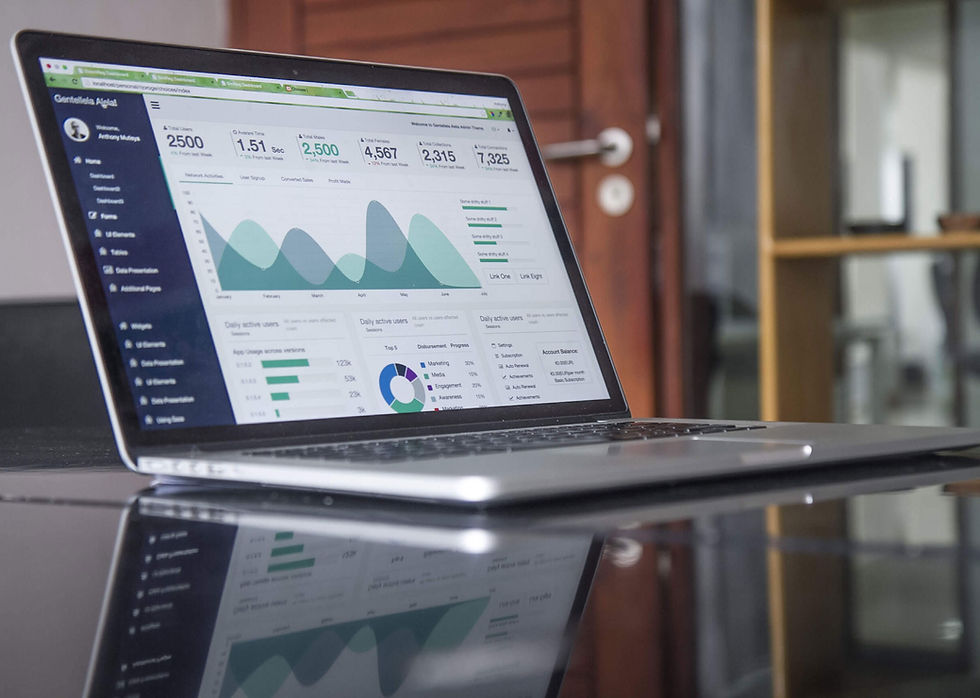How to Understand Your Ad Account
- Dean Ladell

- Jan 18, 2024
- 4 min read
By: Drew Greene
Have you ever had that moment when you see your Ad Account and you thought “Oh my god… I’m an expert!” and then realized that your numbers are way larger than your actual sales? Everybody has. Don’t be discouraged – it happens all the time and there’s one simple answer: over-attribution. I’ll explain.
The way Meta and Google frame their attribution models heavily favor themselves over all else. If you really think about it, it makes sense. They aren’t breaking any rules, they make the rules. Advertising and the data these platforms own make up the overwhelming majority of their revenue streams – meaning they have engineered their backend to get you to spend as much as you can afford. With all of that being said, attributed dollar amounts are thrown out of proportion a very substantial amount of time in efforts to make it seem like you are making more than you actually are.
The root of the problem for both platforms lies in their lack of attempt to distinguish returning customers from new customer acquisition.
The way Meta and Google work is by optimizing their campaigns to get the most amount of conversions for the cheapest amount of money possible. Now you’re probably thinking “Yes! I can get the most amount of conversions for the cheapest possible, what can go wrong right?” In short… so much can go wrong.
Let’s start here. In the Meta dashboard, you can see your “Clicks (All)”, “Link Clicks”, “Outbound Clicks”, “Landing Page Views” and “Unique” – now there’s a lot of information to unpack here. At surface level, all of these definitions are intimidatingly similar. Let me spitfire some definitions at you quickly.
Clicks (All) measures the number of clicks on your ads whether that be link clicks, clicks to your business page or profile picture, reactions, comments or shares, clicks to expand your photo or video or liking a page… they add up.
Link Clicks measure the number of clicks on links within the ad that led to destinations or experiences, on or off Facebook.
Outbound Clicks measure any time you click a link that takes you away from Facebook.
Landing Page Views measures the number of times a person clicked on an ad link and then successfully loaded the destination web page or Instant Experience. The primary requirement of Landing Page Views is that you must have the Facebook pixel installed.
With all of this in mind, the default metric on your marketing backend is “Cost per Click (CPC)". It is vital to know that CPC does not report the cost per link click, it reports on the cost per “Clicks (All)”. So the potentially cheap cost per click you think you are receiving could be a lot more expensive than you think it is. In a lot of cases, the number of “Clicks (All)” is off from the number of your “Landing Page Views” and “Outbound Clicks” by 80-90%.
Why is this the case? Meta and Google definitely want to give the most accurate results… right? No. They want to make it seem like you’re getting the biggest bang for your buck and in reality that might not be the case. So moving forward, do your diligence with double tracking all of your metrics before you take whichever platform at surface level.
To effectively tackle over-attribution, it's important to distinguish between returning customers, those already aware of the brand, and genuinely new users. Achieving this is more challenging than it appears, as it necessitates identifying limitations within both the Facebook Ads and Google Ads platforms.
A solid way to combat over-attribution with purchase conversion values and ROAS is to separate all of your campaigns and audience types in those particular campaigns. For example – if you have a specific promotion you are running, say 25% off ALL inventory, you should make more than one campaign for that promotional period. For instance:
Campaign 1: Retargeting - ASC Budgeting
Ad Set 1: Web visitors 60 day
Ad Set 2: ATC 60 day
Ad Set 3: Purchasers 60 day
Ad Set 4: Customer Lists or Email Lists
Ad Level: Copy ~ 25% Off to Our Loyal Customers Like You! ~
Campaign 2: ACQ (Lookalikes)
Ad Set 1: WV 60 Day LAL
Ad Set 2: ATC 60 Day LAL
Ad Set 3: PUR 60 Day LAL
Ad Set 4: Customer List LAL
→ EXCLUDE WEB VISITORS & CUSTOMER / EMAIL LISTS FROM THIS CAMPAIGN
Ad Level: Copy ~ 25% Off Comfy Essentials… etc… ~
Campaign 3: PPE ASC To Drive Engagement
Ad Level: Go to “Use Existing Post” and paste the code corresponding to the ad you published for the LAL campaign and retargeting campaign.
When setting campaigns up, you want to make sure you’re using the same post per campaign (even cross campaign if you’re keeping the same creative). It maintains the engagement and draws attention to it, causing people to be more mentally and subconsciously engaged with whatever it is you’re advertising.
If your attribution is still showing gaps between your backend and Meta or Google even after you restructure your campaigns in the way listed above, do not lose hope… there are still solutions, I promise! There are attribution softwares that will sync in the backend of all of your platforms and give you day-by-day reports on all of your campaign data, overview data and anything else you could think of – and believe me when I say, they are a lot more accurate than the platforms themselves.
Thank you for reading and we hope you learned something you didn't already know.
Have a great DUCKing day!




Commenti